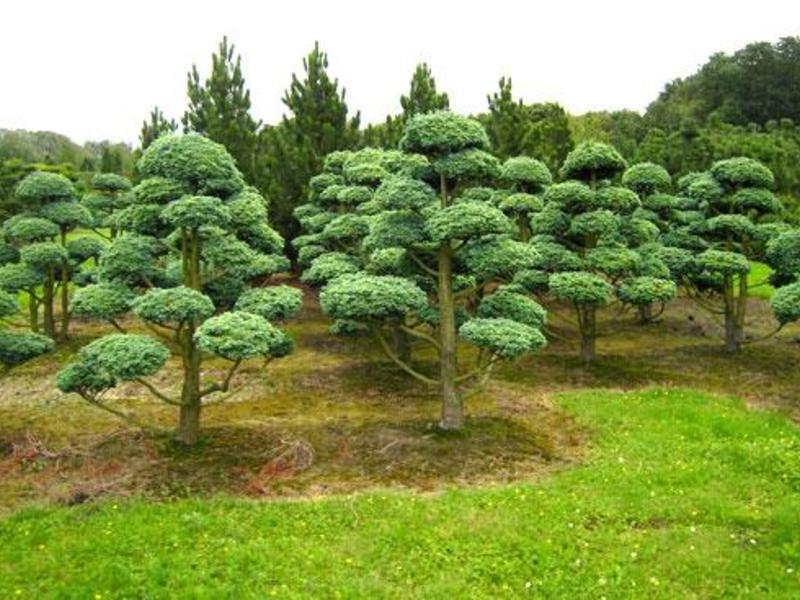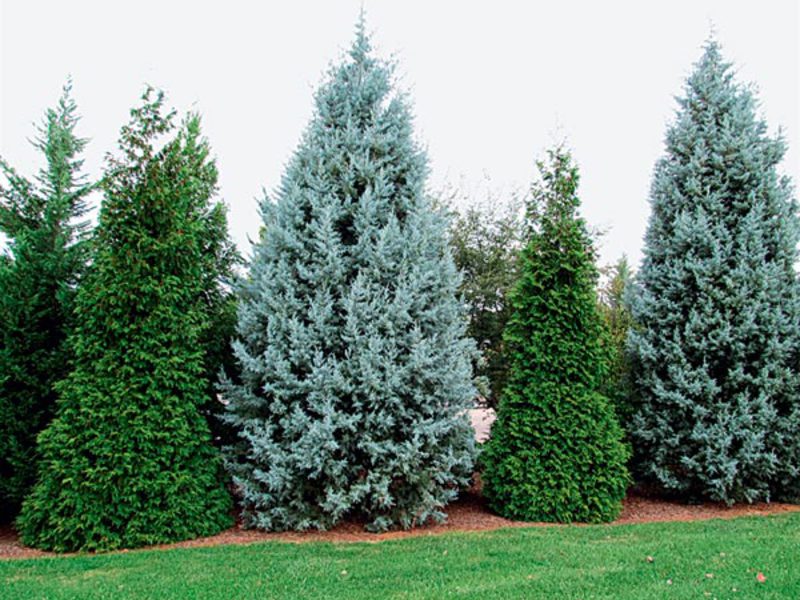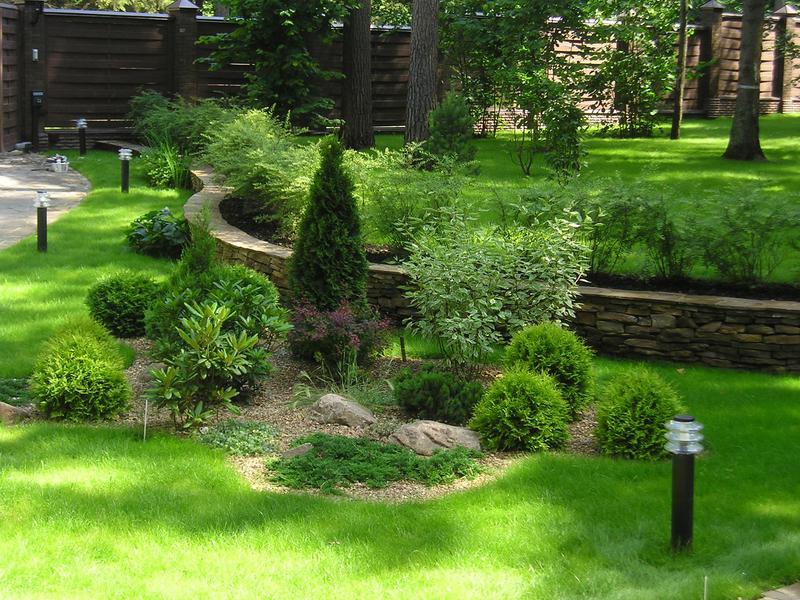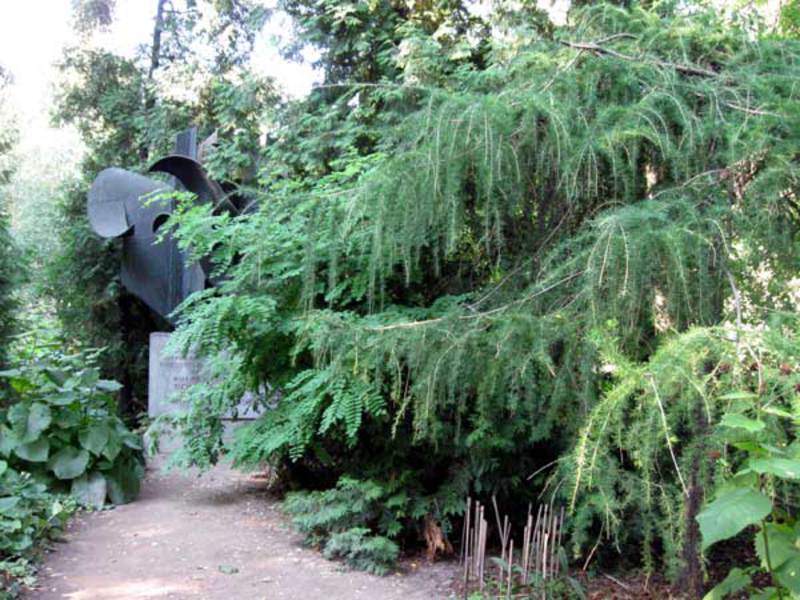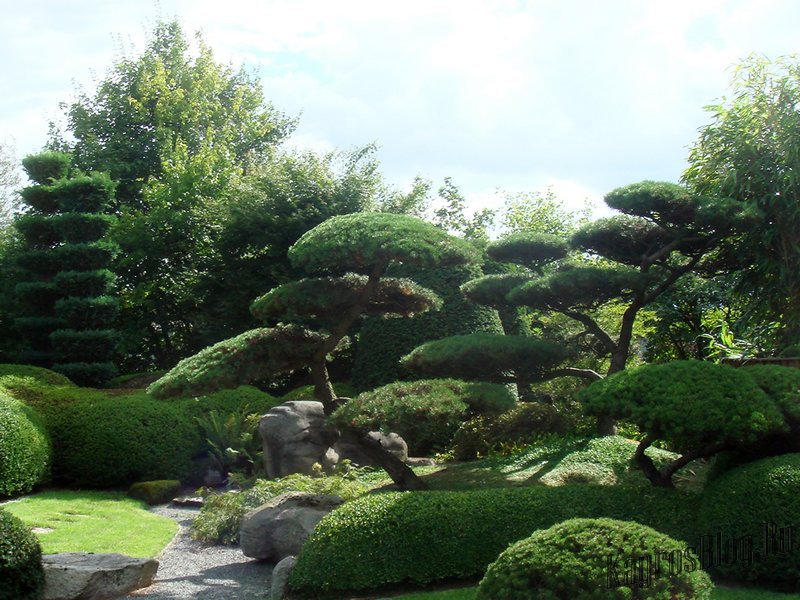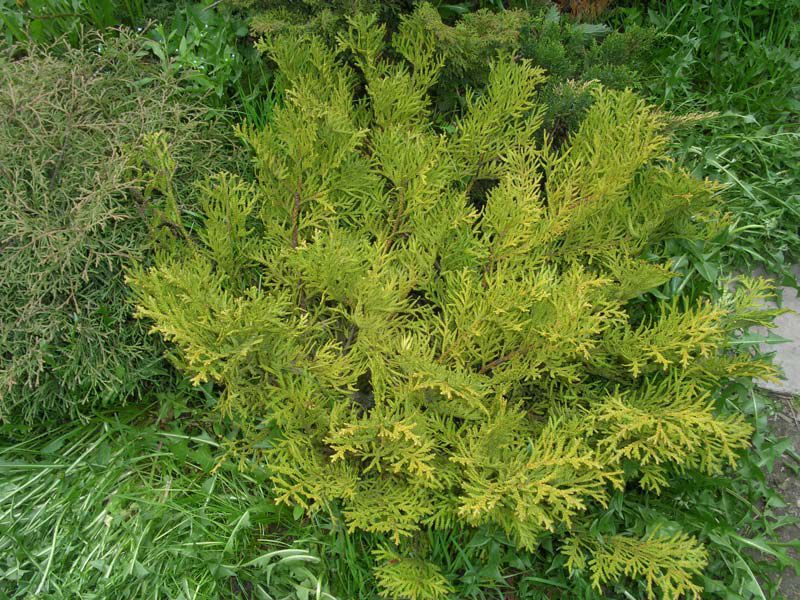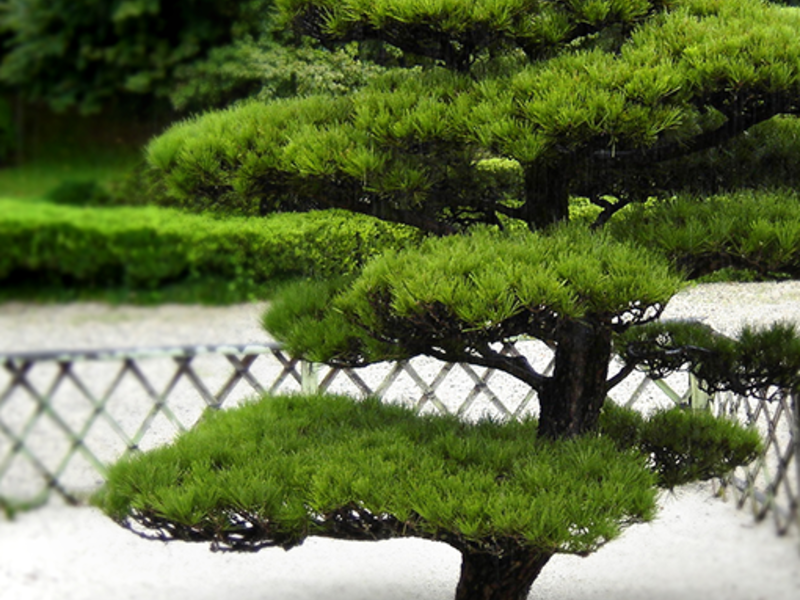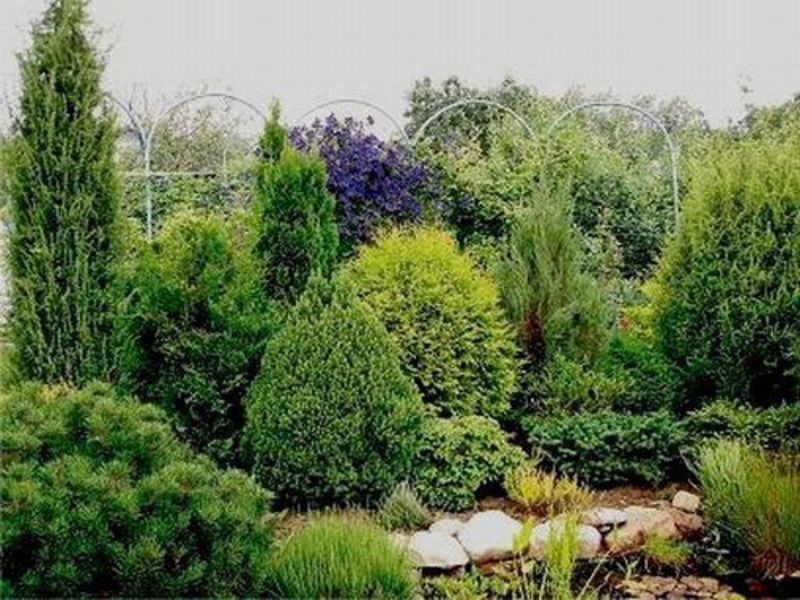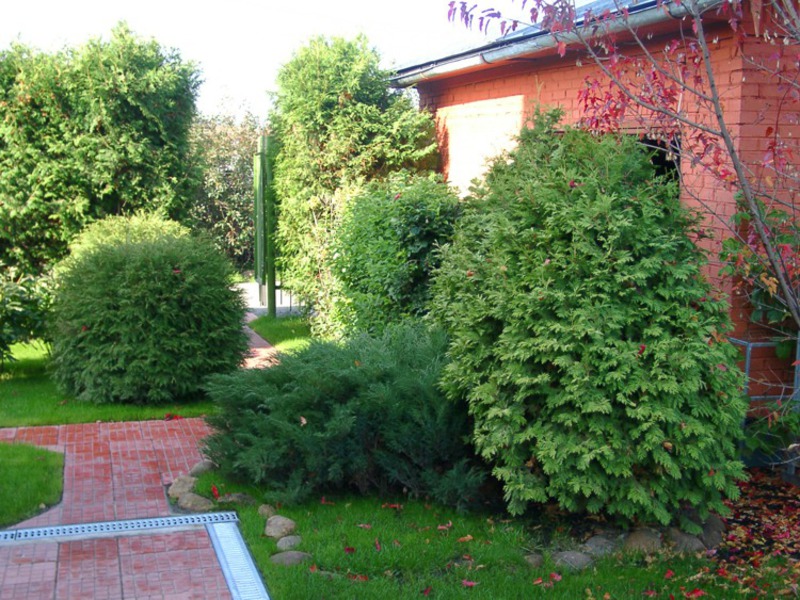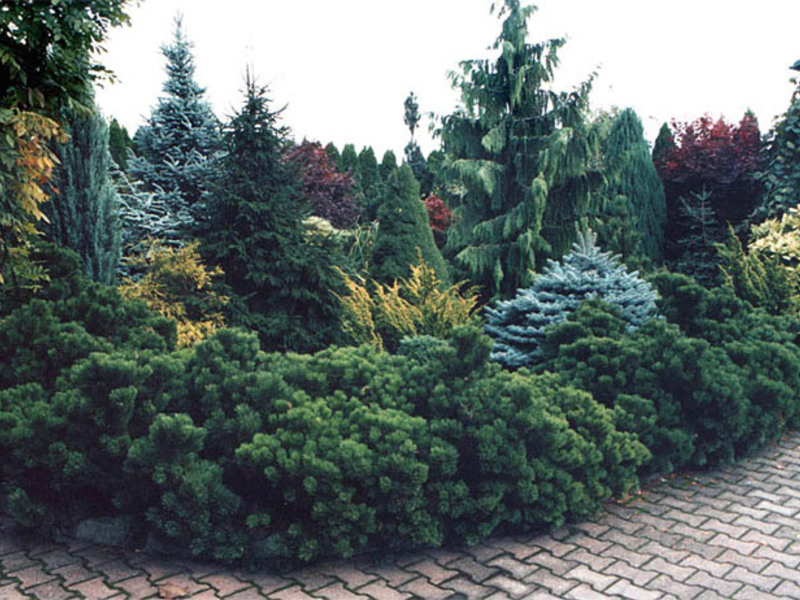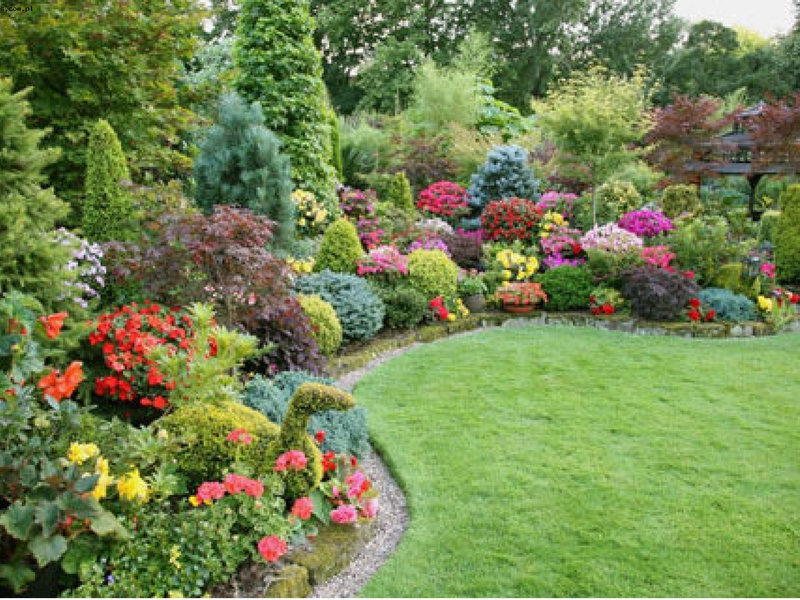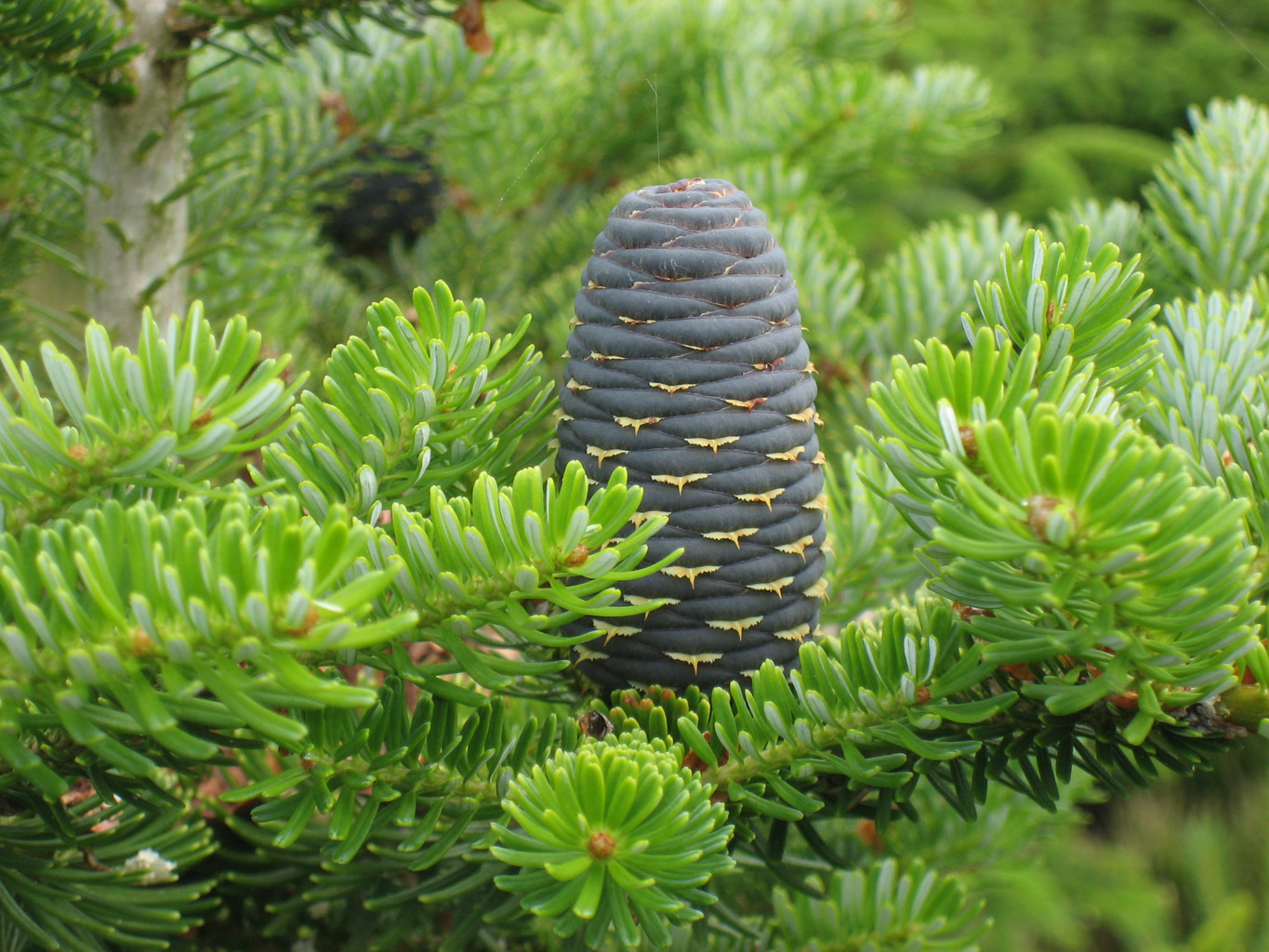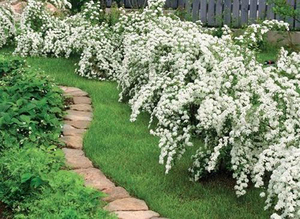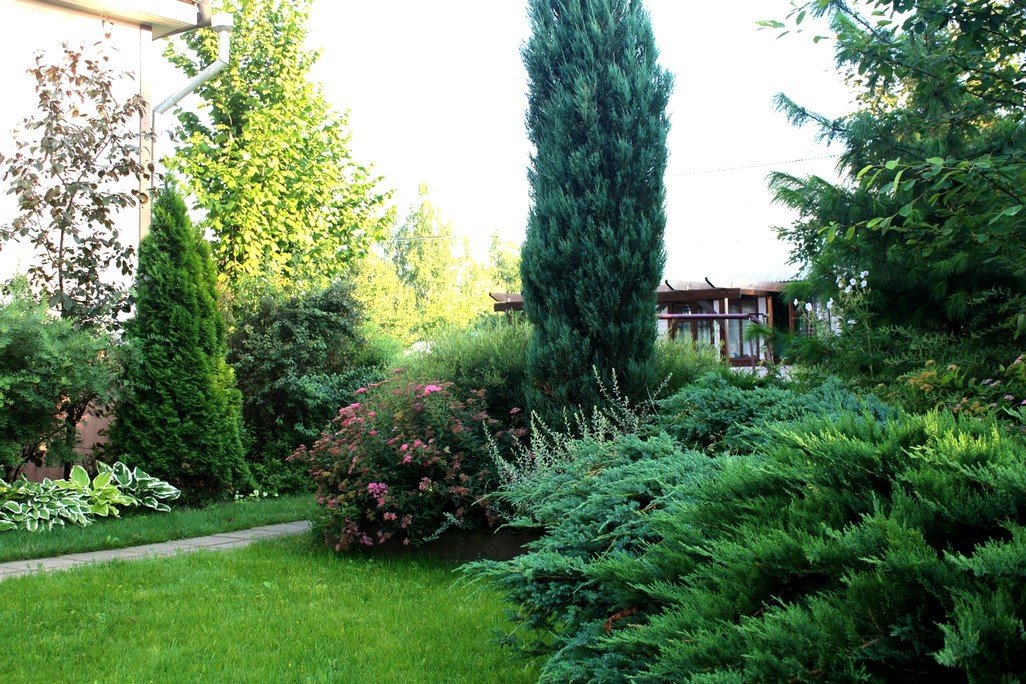One of the frequent recommendations given by doctors to patients is walking in a coniferous forest. First of all, it is useful to do this for people who often experience nervous tension and a state of fatigue. The view of a winter forest, which looks beautiful in combination with fluffy snow, brings aesthetic pleasure to a person.
Content
Aesthetics and benefits at the same time
In order to be closer to nature, many gardeners try to plant on conifers on their site. Moreover, in the conditions of our country, most often the following types are used:
- Spruce;
- Pine;
- Thuja;
- Juniper;
- Yew;
- Fir;
- Cypress.
Conifers differ from deciduous trees in that they preserve needles all year round. They also have many other advantages: durability, unpretentiousness, the ability to maintain a fresh and spectacular look throughout the season. Regardless of the size, conifers allow you to create an unusual and noble landscape, and this idea can be realized in a suburban area of any area.
Decorating options
Having decided to use coniferous trees in the design of the personal plot, the owner can choose one of the following options:
 "Tapeworm". The essence of this design technique is that a single tree of the original shape or color is used, for which a place is chosen far from other plants;
"Tapeworm". The essence of this design technique is that a single tree of the original shape or color is used, for which a place is chosen far from other plants;- "Dominant". The main idea here is based on the selection of one of the trees in the composition, which is usually high enough that it can be viewed from any point;
- "Green fence". This option is used to design blank walls, fences, as well as area zoning;
- "Border". It is one of the most common techniques used when decorating a backyard area;
- "Mixborder". This option has another name - a free-form flower garden. Its essence lies in the free arrangement of plants of different species and varieties;
- "Alpine Hill". A decorative element that resembles a mountain landscape, decorated with various flowers and plants. It is allowed to add several conifers to it;
- Rockery. The difference between the alpine slide and this composition is that there are several types of plants. At the summer cottage, rockery can be arranged with a hill or gently sloping;
- Coniferous arch or gazebo.
Features of the use of conifers in landscape design
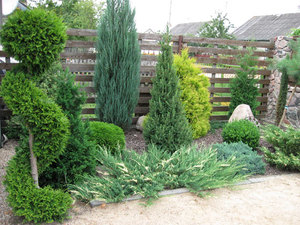 Coniferous plants on the site have a positive effect on the well-being of a person, since the useful substances present in them saturate the air, through which they when breathing, enter the lungs... On top of that, with their presence, they can decorate almost any part of the garden. Therefore, the owner is given complete freedom in design. However, here it is necessary to observe the measure so that the implemented ideas do not violate the general style of landscape design.
Coniferous plants on the site have a positive effect on the well-being of a person, since the useful substances present in them saturate the air, through which they when breathing, enter the lungs... On top of that, with their presence, they can decorate almost any part of the garden. Therefore, the owner is given complete freedom in design. However, here it is necessary to observe the measure so that the implemented ideas do not violate the general style of landscape design.
You can avoid mistakes if you seek help from a specialist.An experienced designer will be able to choose the right plants and advise on the most suitable places for planting them in the garden, so that, after the implementation of all the ideas, the concept of decorating the territory corresponds to the owner's initial ideas.
If you still decide on your own decorate the site, using conifers as one of the elements, it does not hurt to first learn about the characteristics of each species, as well as the nuances of caring for them.
Conifers for the garden: photos and names
Before choosing a certain coniferous tree for planting in the garden, it does not hurt to get acquainted with them first, because even the conifer has its own characteristics.
Gray spruce
This tree is small, in height it can reach 1.2-1.5 m. It is often used when decorating a summer cottage. The presence of spruce in the rock garden and rockery will undoubtedly transform it. Dwarf spruces can also be used as an addition to juniper, which will create a rather interesting mixborder.
A feature of the dwarf-gray spruce is the crown, which can have an acoustic, conical or rounded shape. The branches are short, medium density, tough needles. Although this tree does not require special attention and is resistant to negative temperatures, it will take a long time for its transformation into an adult plant. Due to its unusual color, this tree compares favorably with other coniferous relatives. The name of this tree "gray" can be explained by a variety of color palette, which provides for gray-green, bluish-green and gray-blue shades of needles.
Dwarf pine
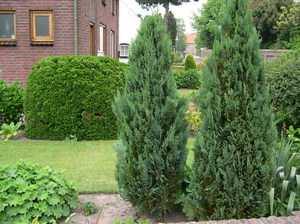 This is one of the miniature representatives of conifers, which does not exceed 90 cm in height.
This is one of the miniature representatives of conifers, which does not exceed 90 cm in height.
Of the features of dwarf pines, it is worth highlighting not only the variety of species, but also ease of care, resistance to winds and negative temperatures. They are also able to withstand the salty air, which is why they have spread in the coastal zones of our country. These conifers are especially demanding for the sun, moisture and soil drainage.
If there is too much alkali in the place chosen for their planting, then they will react to this with yellowing. You can return the former beauty of conifers if you add a little gypsum to the holes before planting. When growing seedlings, it is necessary to thoroughly approach the choice of soil mixture, which must be of high quality.
Pruning is one of the recommended operations that should be done when growing dwarf pines. This should be done in early spring - the buds and "candles" should be removed. But it must be remembered that a haircut is required only for those plants that are at least 2 years old.
Juniper
This representative of coniferous shrubs is distinguished by a very diverse range of colors. The presence of juniper on the site allows you to saturate the surrounding air with phytoncides, making it more healing. In ancient times, this ornamental shrub was treated as a source of immortality; it was often used to protect a home from evil spirits.
Juniper berries are also useful, as they also, due to the presence of bactericidal properties, heal the atmosphere. There are also especially unique varieties of juniper, which moths bypass.
Juniper belongs to those types of conifers, for which very easy to care for... In addition to the fact that it tolerates periods of drought well, this plant does not require special personal care. The shrub feels best in a well-lit place. There are many ornamental varieties of juniper known for the garden, which are resistant to negative temperatures. In addition to emitting a pleasant smell, this shrub is also capable of decorating the territory of the site.
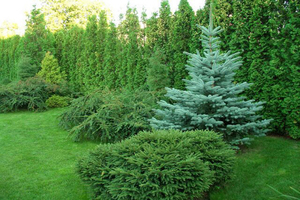 Creeping plant varieties can be an excellent substitute for lawn grass;
Creeping plant varieties can be an excellent substitute for lawn grass;- Spherical species can be used as free-standing plants or rockeries;
- A columnar juniper looks especially original, which is recommended to be planted near a hedge or next to a house;
- Pyramidal plants are also able to decorate the backyard area - they look best near the fence and in the center of the plot.
When the time comes for transplanting, trauma to the root system must be avoided, so it is recommended to completely dig up the plant. While preparing the shrub for winter, a rope is squeezed over its crown at the top. This allows the bush to maintain its original shape when it is under a layer of snow. Young juniper bushes need support, so after planting, a peg is placed next to them, to which they need to be tied. Otherwise, in case of strong wind or during snowfall, they will fall.
Cypress
This representative of evergreen conifers has many advantages, among which it is especially worth highlighting durability, resistance to negative temperatures, unpretentiousness, which allows it to grow even in conditions of a highly polluted atmosphere and strong winds. It can be planted even in not very fertile soil. The main thing is to take care of creating good drainage.
These plants are not only able to tolerate long periods of drought, but can also grow in wetlands. Although the highest quality specimens can be obtained if they are provided with regular watering and partial shade. You especially need to be careful when choosing a place for planting yellowish cypress varieties, which are recommended to be grown in sunny areas.
In the wild, the cypress grows to a large size, having a height of 50-70 m... Dwarf varieties look more modest against its background: "Compacta" usually does not exceed 1 m in height, even more miniature is the "Nana" variety, whose height does not exceed 60 cm. High cypress varieties are best planted next to a hedge. As for the dwarf varieties, distinguished by lush creeping branches falling down or intertwining with each other, it is recommended for them to choose a more strict design of rockeries or multi-colored rock gardens. Conifers tolerate cutting well.
Thuja
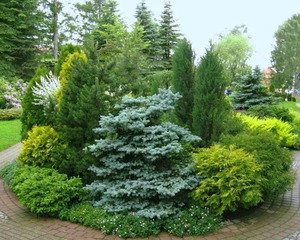 A feature of this coniferous plant is that it reaches an adult state in a shorter time, and also has excellent survival rate after transplantation, regardless of soil fertility. The smallest representative in this family is the Aurea Nana variety, whose height does not exceed 0.6 m.
A feature of this coniferous plant is that it reaches an adult state in a shorter time, and also has excellent survival rate after transplantation, regardless of soil fertility. The smallest representative in this family is the Aurea Nana variety, whose height does not exceed 0.6 m.
These conifers are very demanding for sunlight, although in some cases they are able to tolerate partial blackout. They can be used in the garden to create a green hedge, as they are not only frost-resistant, but also show extremely fast growth.
Plants are small and always look perfect. Thuja care is not associated with any difficulties. Thuja became widespread among gardeners as a means for decorating lawns and curbs. Particular attention should be paid to young thuja bushes, as they can suffer from sunburn. Therefore, until they reach adulthood, they are grown with a shelter, and then they are tied with twine on the crown of the crown.
Conclusion
You don't have to plant exotic crops to decorate your garden. Conifers can also be a good option, which are very diverse... Most of them, including ephedra, grow well in the conditions of our country, so there will be no problems in caring for them.Due to the large species diversity, the gardener will be able to choose the best option for himself, taking into account not only the agricultural technology of their cultivation, but also the decorative properties.
